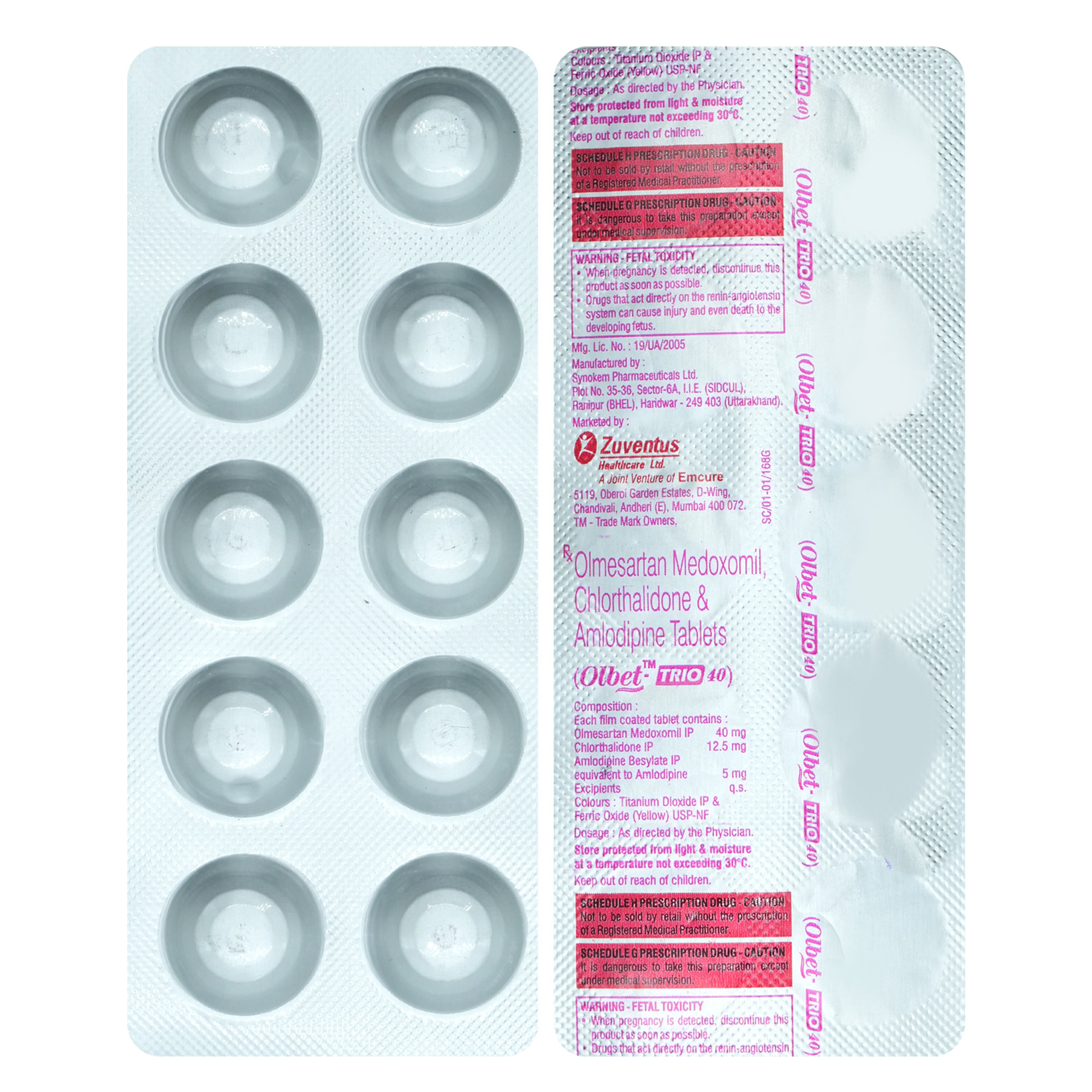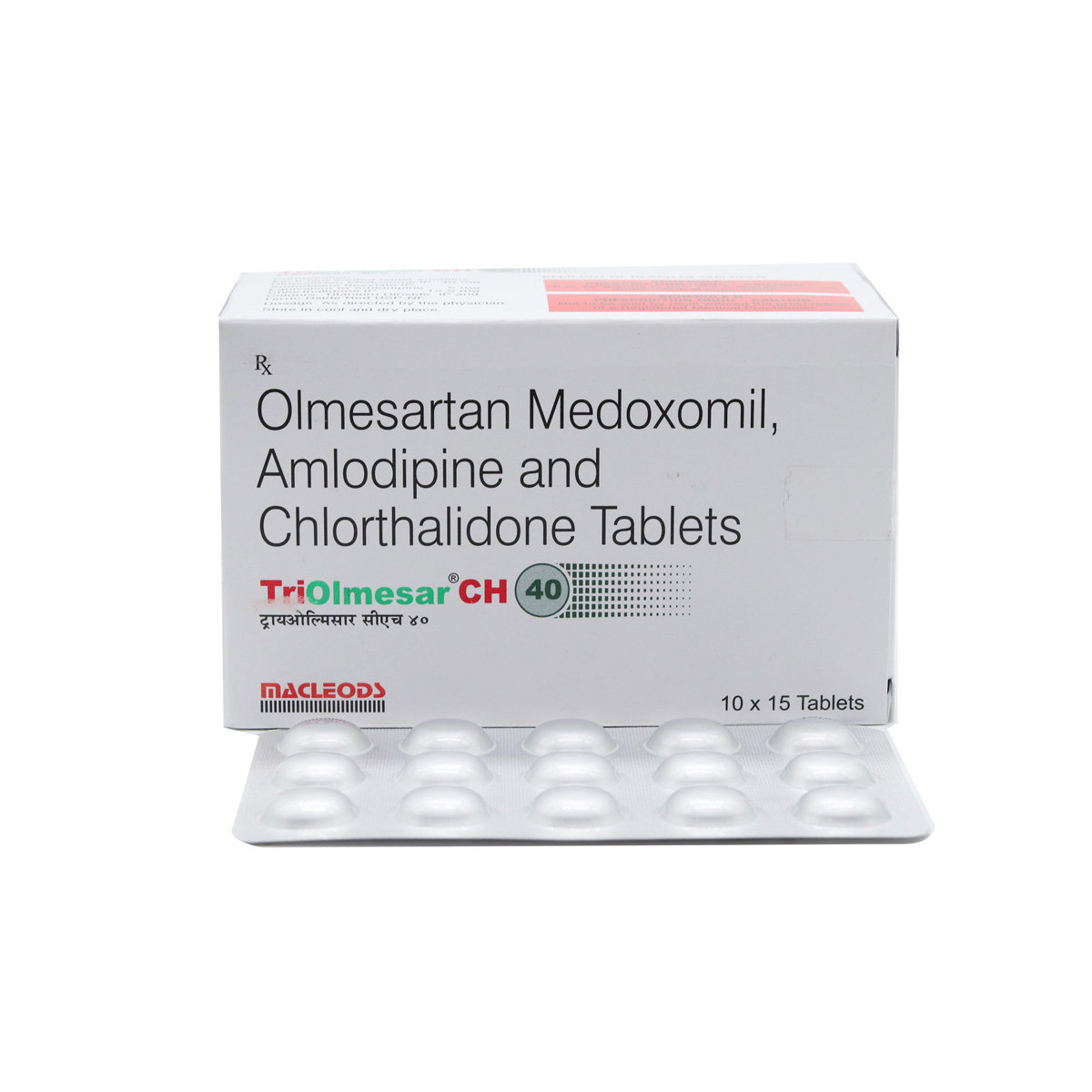Triolsar 40 HS Tablet

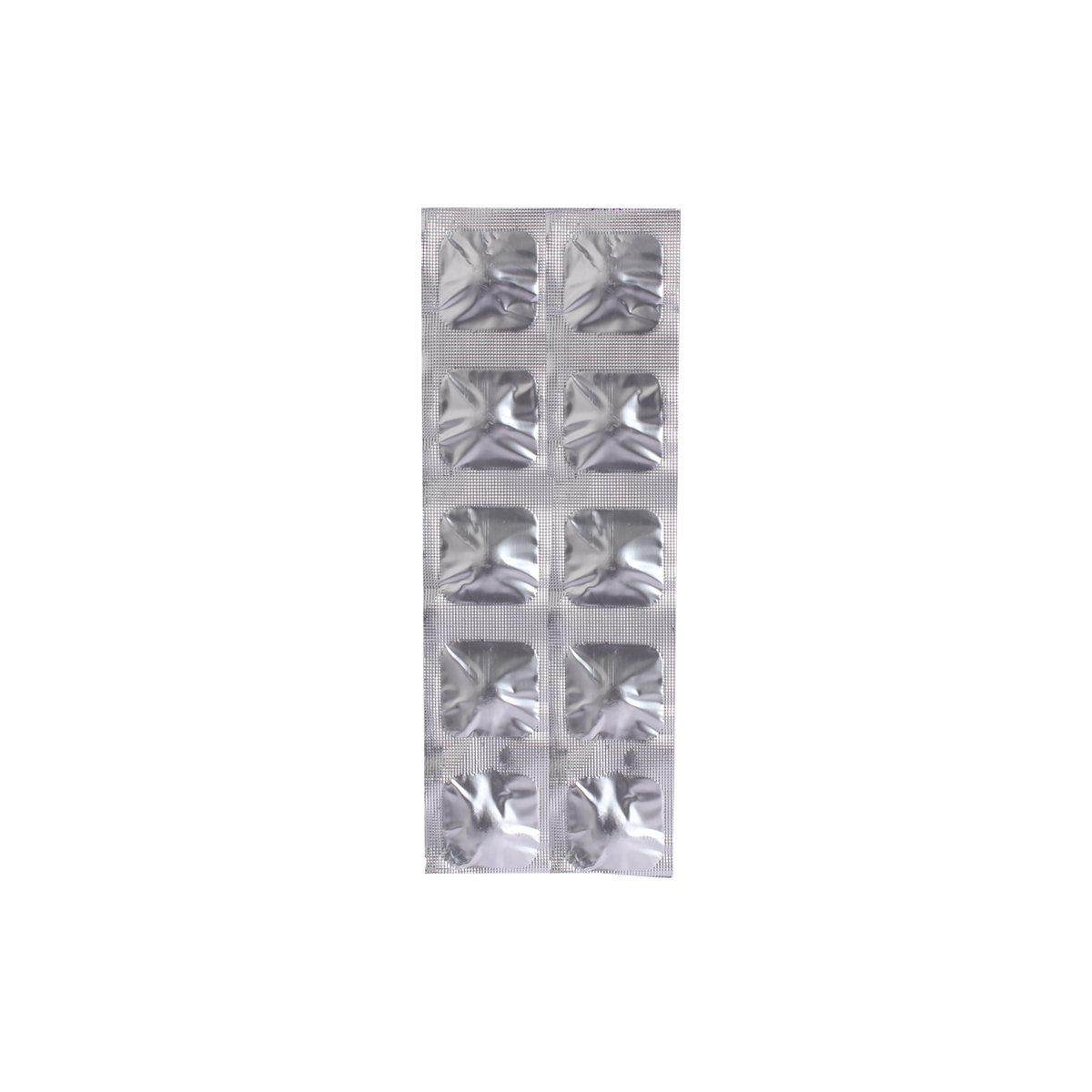
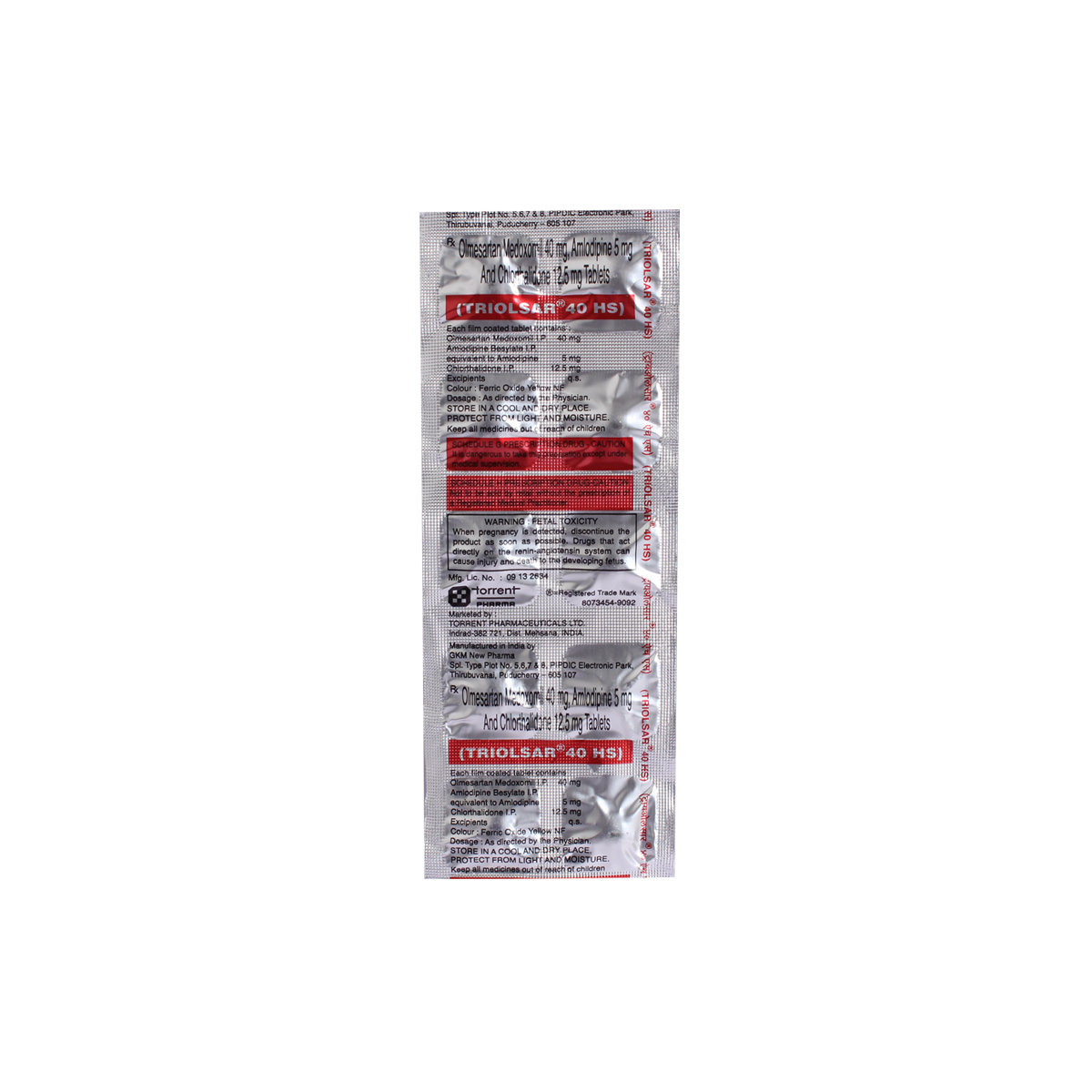
MRP ₹258.5
(Inclusive of all Taxes)
₹38.8 Cashback (15%)
know your delivery time
Provide Delivery Location
Manufacturer/Marketer :
Consume Type :
Expires on or after :
Return Policy :

Secure Payment

Trusted by 8 Crore Indians

Genuine Products
Therapeutic Class
Country of origin
Manufacturer/Marketer address
Author Details
We provide you with authentic, trustworthy and relevant information
Disclaimer
Alcohol
Safe if prescribed
Avoid consumption of alcohol with Triolsar 40 HS Tablet as it may increase the risk of low blood pressure and cause adverse effects such as dizziness, fainting, light-headedness or headache.
Pregnancy
Consult your doctor
Triolsar 40 HS Tablet is not recommended for pregnant women as it may cause serious harm to the unborn baby. Please consult a doctor if you are pregnant.
Breast Feeding
Consult your doctor
Triolsar 40 HS Tablet may be excreted in human milk and harm the baby. Therefore, avoid taking Triolsar 40 HS Tablet if you are breastfeeding and consult a doctor.
Driving
Safe if prescribed
Triolsar 40 HS Tablet may cause dizziness or drowsiness in some people. Therefore, avoid driving if you feel dizzy or drowsy after taking Triolsar 40 HS Tablet .
Liver
Consult your doctor
Take Triolsar 40 HS Tablet with caution, especially if you have a history of Liver diseases/conditions. The dose may be adjusted by your doctor as required. Avoid taking Triolsar 40 HS Tablet if you have severe liver disease.
Kidney
Consult your doctor
Take Triolsar 40 HS Tablet with caution, especially if you have a history of Kidney diseases/conditions. The dose may be adjusted by your doctor as required. Avoid taking Triolsar 40 HS Tablet if you have severe kidney disease.
Children
Safe if prescribed
Triolsar 40 HS Tablet is not recommended for children below 18 years as safety and effectiveness is not established.
Product Substitutes
About Triolsar 40 HS Tablet
Triolsar 40 HS Tablet belongs to a class of medicines called antihypertensives used to treat hypertension (high blood pressure) and reduce the risk of heart attack or stroke in adults. Hypertension is a condition in which the force of blood against the walls of the artery is very high. It will be an addition to the workload of the heart and arteries.
Triolsar 40 HS Tablet is a combination of three drugs, namely: Amlodipine (calcium channel blocker), Chlorthalidone (diuretic), and Olmesartan medoxomil (angiotensin II receptor blocker). Amlodipine is a calcium channel blocker that works by acting on muscle cells in the artery walls and relaxes muscle cells. Thereby, it relaxes and widens arteries (blood vessels) and improves the blood flow and oxygen supply to the heart. Chlorthalidone belongs to the class of diuretics (water tablets) that works by increasing the removal of excess water and certain salts such as sodium and potassium from the blood. This removal of water from blood reduces the fluid volume circulating through blood vessels and improves blood flow. Olmesartan medoxomil works by blocking the action of a hormone called angiotensin II in the body that causes the narrowing of blood vessels leading to high blood pressure. Thereby, Triolsar 40 HS Tablet widens and relaxes blood vessels. Thus, it lowers high blood pressure.
Take Triolsar 40 HS Tablet as prescribed by your doctor. You are advised to take Triolsar 40 HS Tablet for as long as your doctor has prescribed it for you based on your medical condition. In some cases, you may experience dizziness, headache, swelling of ankles, feet, hands, arms, or legs, low or high blood pressure, stomach upset, or tiredness. Most of these side effects of Triolsar 40 HS Tablet do not require medical attention and gradually resolve over time. However, if the side effects persist, please consult your doctor.
If you are allergic to Triolsar 40 HS Tablet or any other medicines, please tell your doctor. Triolsar 40 HS Tablet is not recommended for children below 18 years of age. If you are pregnant or breastfeeding, avoid taking Triolsar 40 HS Tablet and consult a doctor. Drive only if you are alert as Triolsar 40 HS Tablet may cause dizziness or drowsiness. You are recommended to avoid alcohol consumption with Triolsar 40 HS Tablet as it may increase the risk of low blood pressure.
Uses of Triolsar 40 HS Tablet
Medicinal Benefits Mweb
Key Benefits
Triolsar 40 HS Tablet contains Amlodipine, Chlorthalidone and Olmesartan medoxomil used to treat high blood pressure. Chlorthalidone is a diuretic (water tablet) that increases the removal of excess water and certain salts such as sodium and potassium from the blood. This removal of water from blood reduces the fluid volume circulating through blood vessels and improves blood flow. Amlodipine and Olmesartan medoxomil relax and widens blood vessels. Thus, Triolsar 40 HS Tablet lowers high blood pressure and reduces the risk of stroke, heart attack or other heart problems.
Directions for Use
Side Effects of Triolsar 40 HS Tablet
- Dizziness
- Headache
- Low or high blood pressure
- Swelling of ankles, feet, hands, arms or legs
- Stomach upset
- Tiredness
Drug Warnings
If you are allergic to Triolsar 40 HS Tablet or any other medicines, please tell your doctor. Triolsar 40 HS Tablet is not recommended for children below 18 years of age. If you are pregnant or breastfeeding, avoid taking Triolsar 40 HS Tablet and consult a doctor. Avoid taking Triolsar 40 HS Tablet if you have low levels of sodium or potassium in blood, gout, kidney stones, Addison’s disease (adrenal gland does not produce sufficient steroids), high blood levels of calcium, severe liver or kidney problems. Drive only if you are alert as Triolsar 40 HS Tablet may cause dizziness or drowsiness. You are recommended to avoid alcohol consumption with Triolsar 40 HS Tablet as it may increase the risk of low blood pressure.
Drug-Drug Interactions
Drug-Drug Interactions
Login/Sign Up
Using aliskiren together with olmesartan may increase the risk of serious side effects (kidney problems, low blood pressure, and high potassium levels in the blood).
How to manage the interaction:
Taking Triolsar 40 HS Tablet with Aliskiren is not recommended as it can cause an interaction, they can be taken if advised by a doctor. You should seek medical attention if you experience nausea, vomiting, weakness, confusion, tingling of the hands and feet, feelings of heaviness in the legs, a weak pulse, or a slow or irregular heartbeat.It is crucial that you continue to consume enough fluids while taking these medications. Do not stop using any medications without consulting a doctor.
Using Triolsar 40 HS Tablet together with dantrolene may increase the risk of hyperkalemia (high blood potassium).
How to manage the interaction:
Taking Triolsar 40 HS Tablet with Dantrolene can cause an interaction, consult a doctor before taking it. You should seek medical attention if you experience nausea, vomiting, weakness, confusion, tingling of the hands and feet, a weak pulse, or a slow or irregular heartbeat. Do not stop using any medications without talking to a doctor.
Co-administration of Triolsar 40 HS Tablet and cisapride may increase the risk or severity of an irregular heart rhythm that may be serious.
How to manage the interaction:
Taking Triolsar 40 HS Tablet with Cisapride is not recommended, please consult your doctor before taking it. Do not discontinue the medication without consulting a doctor.
Using Triolsar 40 HS Tablet with Potassium chloride may increase Potassium levels in the blood.
How to manage the interaction:
Although taking Triolsar 40 HS Tablet together with Potassium chloride may lead to an interaction but can be taken if prescribed by the doctor. However, consult the doctor if you experience nausea, vomiting, weakness, disorientation, tingling in your hands and feet, feelings of heaviness in your legs, a weak pulse, or a slow or irregular heartbeat. It is important to maintain proper fluid intake while taking these medications. Do not stop using any medications without talking to a doctor.
Coadministration of Triolsar 40 HS Tablet with potassium iodide may increase potassium levels in the blood. (High potassium levels can cause hyperkalemia, which can lead to kidney failure, muscular paralysis, abnormal heart rhythm, and cardiac arrest in extreme cases).
How to manage the interaction:
Although taking Triolsar 40 HS Tablet together with potassium iodide may lead to an interaction but can be taken if prescribed by the doctor. However, consult the doctor if you experience nausea, vomiting, weakness, disorientation, tingling in your hands and feet, feelings of heaviness in your legs, a weak pulse, or a slow or irregular heartbeat. It is important to maintain proper fluid intake while taking these medications. Do not stop using any medications without talking to a doctor.
Taking Triolsar 40 HS Tablet with trimethoprim may increase potassium levels in the blood.
How to manage the interaction:
Although taking Triolsar 40 HS Tablet with trimethoprim may lead to an interaction but can be taken if prescribed by the doctor. However, consult the doctor if you experience nausea, vomiting, weakness, disorientation, tingling in your hands and feet, feelings of heaviness in your legs, a weak pulse, or a slow or irregular heartbeat. Do not stop using any medications without talking to a doctor.
Triolsar 40 HS Tablet when combined with benazepril may cause low blood pressure, kidney problems, and may increase potassium levels in the blood.
How to manage the interaction:
Although taking Triolsar 40 HS Tablet with benazepril may lead to an interaction but can be taken if prescribed by the doctor. However, consult the doctor if you experience nausea, vomiting, weakness, disorientation, tingling in your hands and feet, feelings of heaviness in your legs, a weak pulse, or a slow or irregular heartbeat. Do not stop using any medications without talking to a doctor.
Taking lithium with Triolsar 40 HS Tablet may significantly increase the blood levels of lithium .
How to manage the interaction:
Although taking Triolsar 40 HS Tablet alongside lithium can lead to interaction, they can be taken if prescribed by a doctor. However, if you develop sleepiness, dizziness, confusion, loose stools, vomiting, muscular weakness, muscle incoordination, a shaking sensation, blurred vision, ringing in the ears, excessive thirst, and/or increased urination, consult a doctor. Do not stop using any medications without talking to a doctor.
Taking Triolsar 40 HS Tablet with triamterene may increase potassium levels in the blood. (High potassium levels can cause hyperkalemia, which can lead to kidney failure, muscular paralysis, abnormal heart rhythm, and cardiac arrest in extreme cases).
How to manage the interaction:
Although taking Triolsar 40 HS Tablet with triamterene may lead to an interaction but can be taken if prescribed by the doctor. However, consult the doctor if you experience nausea, vomiting, weakness, disorientation, tingling in your hands and feet, feelings of heaviness in your legs, a weak pulse, or a slow or irregular heartbeat. Do not stop using any medications without talking to a doctor.
When Triolsar 40 HS Tablet is taken with captopril, it may cause low blood pressure, kidney problems, and may increase potassium levels in the blood.
How to manage the interaction:
Although taking Triolsar 40 HS Tablet with captopril may lead to an interaction but can be taken if prescribed by the doctor. However, consult the doctor if you experience nausea, vomiting, weakness, disorientation, tingling in your hands and feet, feelings of heaviness in your legs, a weak pulse, or a slow or irregular heartbeat. Do not stop using any medications without talking to a doctor.
Drug-Food Interactions
Drug-Food Interactions
Login/Sign Up
Lentils, Orange Juice, Oranges, Raisins, Potatoes, Salmon Dried, Spinach, Tomatoes, Sweet Potatoes, Coconut Water, Beans, Beetroot, Broccoli, Bananas, Apricots, Avocado, Yogurt
How to manage the interaction:
Coadministration of potassium-containing salt substitutes with Olmesartan medoxomil, Amlodipine, and chlorthalidone may cause high levels of potassium in blood. Avoid potassium-containing salt substitutes while being treated with Olmesartan medoxomil, Amlodipine, and chlorthalidone.
Drug-Diseases Interactions
Drug-Diseases Interactions
Login/Sign Up
Drug-Drug Interactions Checker List
- ASPIRIN
- INDOMETHACIN
- LITHIUM
- HEPARIN
- COLESEVELAM
- SIMVASTATIN
- VERAPAMIL
- DILTIAZEM
- ERYTHROMYCIN
- CLARITHROMYCIN
- RIFAMPICIN
- TACROLIMUS
- CYCLOSPORINE
- EVEROLIMUS
- SIROLIMUS
- TEMSIROLIMUS
- AMILORIDE
- SPIRONOLACTONE
- DIGOXIN
Habit Forming
Special Advise
Monitor your blood pressure regularly and if you notice any fluctuations, please consult a doctor.
Diet & Lifestyle Advise
- Minimize eating processed foods as they contain more sodium. Try to replace salt with spices or herbs to add flavor to the food.
- Do regular exercise such as cycling, walking, jogging, dancing, or swimming for a minimum of 30 minutes per day.
- Chronic stress may also cause high blood pressure. Therefore, avoid stress by changing your expectations, and the way you react in certain situations and do activities that you enjoy by making time for yourself.
- Maintain a diet that is rich in fruits, vegetables, whole grains, and low-fat dairy products.
- Try to include heart-healthy omega-3 fatty acid-containing foods in your daily diet. You can also use low-fat cooking oil like olive oil, soybean oil, canola oil, and coconut oil which may help in lowering high blood pressure.
- Quit smoking and avoid the consumption of alcohol.
All Substitutes & Brand Comparisons
RX
Out of StockOlmefast CH 40mg/5mg/12.5mg Tablet
₹135
(₹12.15 per unit)
47% CHEAPERRX
Olbet-Trio 40mg Tablet 10's
Zuventus Healthcare Ltd
₹247.5
(₹22.28 per unit)
4% CHEAPERRX
Triolmesar CH 40 Tablet 15's
Macleods Pharmaceuticals Ltd
₹440
(₹26.4 per unit)
13% COSTLIER

Have a query?
Buy best Cardiology products by
Torrent Pharmaceuticals Ltd
Sun Pharmaceutical Industries Ltd
Lupin Ltd
Intas Pharmaceuticals Ltd
Cipla Ltd
Micro Labs Ltd
Macleods Pharmaceuticals Ltd
Abbott India Ltd
Ajanta Pharma Ltd
Ipca Laboratories Ltd
Eris Life Sciences Ltd
Mankind Pharma Pvt Ltd
Lloyd Healthcare Pvt Ltd
Dr Reddy's Laboratories Ltd
Glenmark Pharmaceuticals Ltd
Emcure Pharmaceuticals Ltd
Alembic Pharmaceuticals Ltd
Alkem Laboratories Ltd
East West Pharma India Pvt Ltd
USV Pvt Ltd
Zydus Healthcare Ltd
Aristo Pharmaceuticals Pvt Ltd
Elbrit Life Sciences Pvt Ltd
J B Chemicals & Pharmaceuticals Ltd
Zydus Cadila
Akumentis Healthcare Ltd
Alteus Biogenics Pvt Ltd
Hbc Life Sciences Pvt Ltd
Fusion Health Care Pvt Ltd
Troikaa Pharmaceuticals Ltd
La Renon Healthcare Pvt Ltd
Corona Remedies Pvt Ltd
Jubilant Lifesciences Ltd
Medley Pharmaceuticals Ltd
Knoll Healthcare Pvt Ltd
Msn Laboratories Pvt Ltd
Zuventus Healthcare Ltd
Cadila Pharmaceuticals Ltd
Blue Cross Laboratories Pvt Ltd
Lividus Pharmaceuticals Pvt Ltd
Morepen Laboratories Ltd
Ranmarc Labs
Shrrishti Health Care Products Pvt Ltd
Sanofi India Ltd
Steris Healthcare
Elder Pharmaceuticals Ltd
Primus Remedies Pvt Ltd
Unison Pharmaceuticals Pvt Ltd
Eswar Therapeutics Pvt Ltd
Knoll Pharmaceuticals Ltd
Tas Med India Pvt Ltd
Systopic Laboratories Pvt Ltd
Indiabulls Pharmaceuticals Pvt Ltd
Leeford Healthcare Ltd
Sinsan Pharmaceuticals Pvt Ltd
Biochem Pharmaceutical Industries Ltd
Cadila Healthcare Ltd
Azkka Pharmaceuticals Pvt Ltd
Nirvana India Pvt Ltd
Orsim Pharma
Prevego Healthcare & Research Pvt Ltd
Econ Healthcare
Elinor Pharmaceuticals (P) Ltd
FDC Ltd
Sunij Pharma Pvt Ltd
Nicholas Piramal India Ltd
Astra Zeneca Pharma India Ltd
Pfizer Ltd
Lia Life Sciences Pvt Ltd
Shine Pharmaceuticals Ltd
Elicad Pharmaceuticals Pvt Ltd
Indoco Remedies Ltd
Proqol Health Care Pvt Ltd
Vasu Organics Pvt Ltd
Biocon Ltd
Opsis Care Lifesciences Pvt Ltd
Johnlee Pharmaceuticals Pvt Ltd
Merck Ltd
Wockhardt Ltd
Auspharma Pvt Ltd
Ergos Life Sciences Pvt Ltd
Lakshya Life Sciences Pvt Ltd
Ordain Health Care Global Pvt Ltd
Pficus De Med Pvt Ltd
ALICAN PHARMACEUTICAL PVT LTD
RPG Life Sciences Ltd
Glynis Pharmaceuticals Pvt Ltd
Orris Pharmaceuticals
Samarth Life Sciences Pvt Ltd
Aprica Pharmaceuticals Pvt Ltd
Aretaeus Pharmaceuticals Pvt Ltd
Koye Pharmaceuticals Pvt Ltd
Neocardiab Care
Retra Life Science Pvt Ltd
Alniche Life Sciences Pvt Ltd
Alvio Pharmaceuticals Pvt Ltd
Arkas Pharma Pvt Ltd
Atos Lifesciences Pvt Ltd
Divine Savior Pvt Ltd
Metalis Lifesciences Pvt Ltd
Customers Also Bought
Recommended for a 30-day course: 3 Strips




